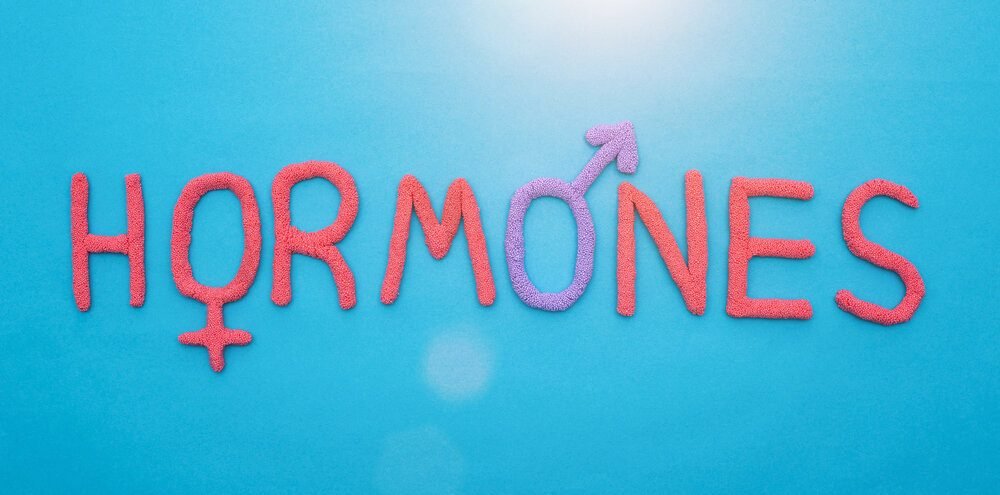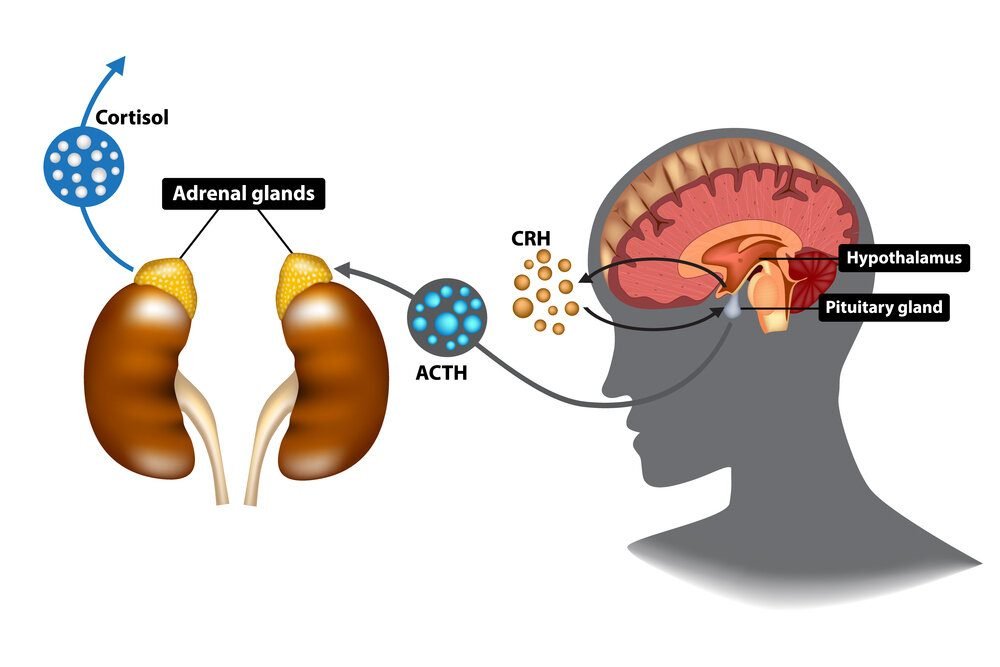
One of the most important aspects of women’s health is balanced hormones. Not many women are aware that hormonal imbalance may be the culprit behind why they struggle to be healthy. However, reading up on hormones can get a bit confusing. So today, we’ll discuss the HPA axis, the HPG axis, how they are linked to each other, and other information you need to achieve hormonal balance.
What Are Hormones?
Hormones are referred to as the body’s chemical messengers. They travel within the body to relay messages from the brain to other organ systems. Hormones play a vital role, which makes it so much more important that they are functioning optimally. Otherwise, they can be bombarding or sending reduced messages to a certain organ system, which can cause health problems.
The adrenal glands are the source of numerous hormones in the body, most important of which are steroid hormones. Three types of this affect body functions:
- Mineralocorticoids – affects water and salt balance
- Glucocorticoids – influences the immune system through activity regulation
- Androgens – sex hormones that affect sex characteristics and sexual behaviour in men and women
What’s the Hormonal Axis?
The hormonal axis is composed of the hypothalamic-pituitary-adrenal (HPA axis) and the hypothalamic-pituitary-gonadal axis (HPG axis).
1. The HPA Axis
The HPA axis addresses the stress response of the body by releasing cortisol. Contrary to what people believe, cortisol or the stress hormone doesn’t always have a harmful effect on the body. It helps control the metabolism, regulates blood flow, influences insulin sensitivity, and to some extent, strengthens the immune system. Cortisol only creates adverse health effects when there’s too much of it in the body.
The process (1):
- When there is a stressor, the hypothalamus releases the corticotropin-releasing hormone (CRH).
- When CRH binds with the anterior pituitary gland receptors, which signals the release of the adrenocorticotropic hormone (ACTH).
- Once the ACTH binds with the receptors on the adrenal cortex, it releases cortisol.
- Cortisol stays in the body hours after its release until it sends negative feedback to the CRF’s hypothalamic release and the ACTH’s pituitary release for systemic homeostasis.
The imbalance begins when the body is constantly exposed to stressors, which repeatedly triggers HPA axis activation. This makes the body undergo a sustained stress response, which can result in health problems, both physically and mentally. When there’s an overload of cortisol in the body, the following health issues could develop (2):
- Higher risk of infection due to suppressed immune system response
- Poor blood sugar regulation linked to type-2 diabetes and obesity
- Cardiovascular problems due to elevated heart rate
- Impacts the memory, cognition, and mood greatly
- An increase in anxiety
- Metabolic effects like insulin resistance and fat deposition
2. The HPG Axis
This axis controls reproduction as well as puberty and aging. This is what happens:
- When the body is ready to reproduce, the hypothalamus releases gonadotropin-releasing hormone (GnRH).
- This signals the pituitary gland to release luteinizing hormone (LH) and follicle-stimulating hormone (FSH).
- The LH and FSH tell the sex organs to release sex hormones like testosterone in men (small amount in women) and estrogen and progesterone in women.
How Are They Linked?
The “pregnenolone steal” is the main link connecting the HPG and HPA axis. What is it anyway? The pregnenolone or mother hormone stays in the HPG axis. However, when the body experiences chronic stress, the adrenal glands steal pregnenolone and place it in the HPA axis to help keep cortisol levels high (3).
When the “steal” happens, the HPG axis is left without a precursor for secreting estrogen and progesterone in women, which leads to hormonal imbalance. This manifests through irregular and missing menses, acne, and hair growth in unusual places. In men, it affects their testosterone levels.
The other link results in estrogen dominance. When the adrenal glands produce regular amounts of dehydroepiandrosterone (DHEA) steroid hormone, the body automatically converts testosterone into estrogen. The small amount of DHEA produced is also converted into estrogen, resulting in estrogen dominance or an abundance of estrogen in the system. This can result in weight gain, abnormal menstruation, lack of sex drive, fatigue, fibroids, fibrocystic breasts, and endometriosis.
What Is HPA Axis Dysfunction?

HPA dysfunction happens when the body is experiencing too much stress. The stress response system is always on overdrive, which results in a variety of symptoms. Hans Selye, founder of the Stress Theory, enumerated the key components of the stress-response system, these are:
- Circadian Rhythm
- Feedback Loops
- Stressors that affect the HPA axis and the two mentioned above
To treat HPA dysfunction, it is crucial to find the source/s of stress. He broke down the general categories of these sources as:
- Sleep disturbance – sleeping problems and what causes them
- Mental and Emotional Health – past traumas, relationship issues, financial problems, career issues, overwhelming emotions like fear and anger
- Inflammation – arthritis, obesity, toxic burden, tissue damage, allergies
- Glycemic Dysregulation – drinking alcohol, diets that cut calories or skip meals, high glycemic meals
What About Adrenal Fatigue vs HPA Axis Dysregulation?
Usually, patients who complain about fatigue and stress are diagnosed with adrenal fatigue. However, adrenal fatigue encapsulates a wide array of symptoms like low libido, weak immune response, sleep problems, poor recovery, poor exercise tolerance, and memory and concentration issues — all symptoms of a low cortisol level.
The explanation from Hans Selye’s theory is that the adrenals are too exhausted to produce cortisol, and the symptoms above are a manifestation of that. Chris Kesser, the founder of the Kresser Institute, begs to differ. According to him, cases are not always about adrenal fatigue but HPA axis dysregulation. He reasons:
- Not all patients who have adrenal fatigue have low cortisol levels, which means the adrenals are working fine.
- There are patients with adrenal fatigue but have working adrenal glands. Since the brain is the one telling the adrenals to produce cortisol, low cortisol levels may be a symptom of a problem in the central nervous system or the brain itself.
- He said there’s a lack of scientific evidence that proves adrenal fatigue exists.
How to Balance the HPA Axis?
1. Identify the Source of Stress.
You may refer to the list mentioned above.
2. Improve Sleeping Hours and Sleep Quality
Sleep is the time the brain repairs neurons, making it imperative to sleep more hours if you’re not getting them. Additionally, sleep lets the glymphatic system or the brain’s waste management system work optimally.
3. Reduce Inflammation
Chronic stress increases inflammation. To protect and repair the HPA axis, reducing inflammation is a must. Taking curcumin can help as this is a potent anti-inflammatory, plus it provides a bunch of other health effects.
4. Avoid Too Much Exercise
Overtraining is stressful to the body. The adrenals push to release more cortisol to respond to the stress. This leads to irritability, mood issues, and brain fog.
5. Curb Stress
Find ways to destress. Releasing or curbing stress varies from one person to another. For some, going to the spa works. For others, it can be a meditation session. Whatever method or approach, what’s important is to release the pent-up negative energy.
6. Try Natural Supplements
Lisa Alschuler shares how to optimize the HPA axis naturally. She said these hormones help regulate the HPA axis activation as well as cortisol levels. Please refer to the chart below.

Dealing with hormones can be tricky, yet it starts with understanding what the body goes through and why hormonal imbalances happen. The more aware you are, the better you can help yourself get on track to being healthier. And of course, consulting an endocrinologist can be of great help, too!
Sources: